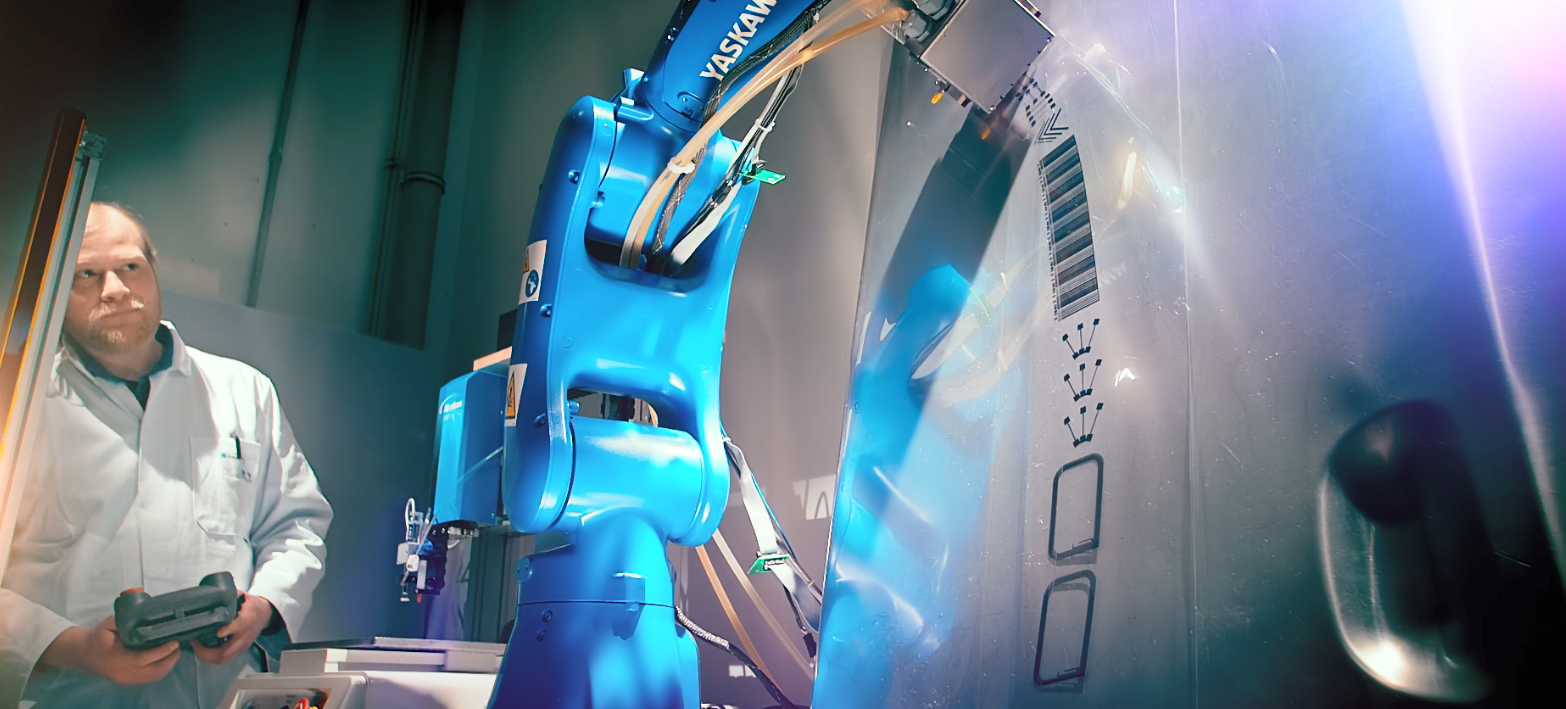Fraunhofer ENAS demonstrates robot-assisted inkjet printing on 3D components and printing processes for the production of fuel cell components at the digital LOPEC 2021
The Fraunhofer Institute for Electronic Nano Systems ENAS participates in the digital LOPEC 2021 from March 23-25, 2021. The trade show and conference is the most important global meeting point for the printed electronics industry. Fraunhofer ENAS will present inkjet printing technology for 3D components as robot-assisted processes as well as printed components for fuel cells.
Robot-assisted inkjet printing on 3D components.
The automated production of customized products has been targeted by important markets such as automotive or aerospace. In order to reflect this trend in production, technologies are required that allow the efficient manufacturing of individual products while taking advantage of the economic benefits of mass production. Specifically, Fraunhofer ENAS is developing functional printing on 3D objects. Functional inks with dielectric or electrically conductible properties are applied to print cable harnesses or even complex sensor systems on arbitrary 3D objects. The printing on 3D objects is implemented in a robot-assisted process, allowing an application of the printing technology on most diverse and distinctive objects. Fraunhofer ENAS uses among others a 6-axis robot-assisted inkjet printing technology and performs extensive research to overcome various challenges of functional printing on 3D objects such as adhesive strength of printed layers and realization of homogenous electrical conductors on curved or vertical surfaces. Extensive research work has been done in the context of the Fraunhofer lighthouse project »Go Beyond 4.0« together with other Fraunhofer institutes. The project is presented at the LOPEC conference in the talk »Towards Individualization of Products in Mass Production: Introducing Digital Manufacturing Routes of the Fraunhofer Lighthouse Project Go Beyond 4.0« by Prof. Dr. Reinhard R. Baumann in the Plenary Session on March 24, 2021.
Printing processes for the manufacture of fuel cell components
In the EU project MAMA-MEA, Fraunhofer ENAS is working with other partners to evaluate existing printing and coating technologies for their potential to enable the mass manufacturing of MEAs. MEAs (Membrane Electrode Assembly) are core components for the chemical reaction within low-temperature polymer electrolyte membrane (PEM) fuel cells, which are used e.g. to drive vehicles. The active PEM area within a car fuel cell is about 30 m². Thus, 30,000 m² of MEA are needed to produce just 1000 cars - a size equivalent to five soccer fields. To produce such large areas of functional MEAs, an effective manufacturing approach is required. By using printing technology, the manufacturing flow can be changed to generate a larger output volume compared to state-of-the-art workflows. The research is focused on inkjet printing, with its advantages of being digitally driven and contact-free. Fraunhofer ENAS contributes with its experience and equipment to the evaluation of inkjet printing technology for the manufacturing of PEM fuel cells.
Fraunhofer ENAS experts can be met digitally at LOPEC 2021 to discuss other topics, such as aerosol jet printing or parylene coating, or applications developed in R&D projects, such as printed heating structures, antennas and medical devices. At www.lopec.com, visitors can register free of charge to attend the trade show, exhibitor product presentations »on demand«, poster presentations including poster downloads, and the conference's Open Plenary Session.
Last modified:
 Fraunhofer Institute for Electronic Nano Systems
Fraunhofer Institute for Electronic Nano Systems
